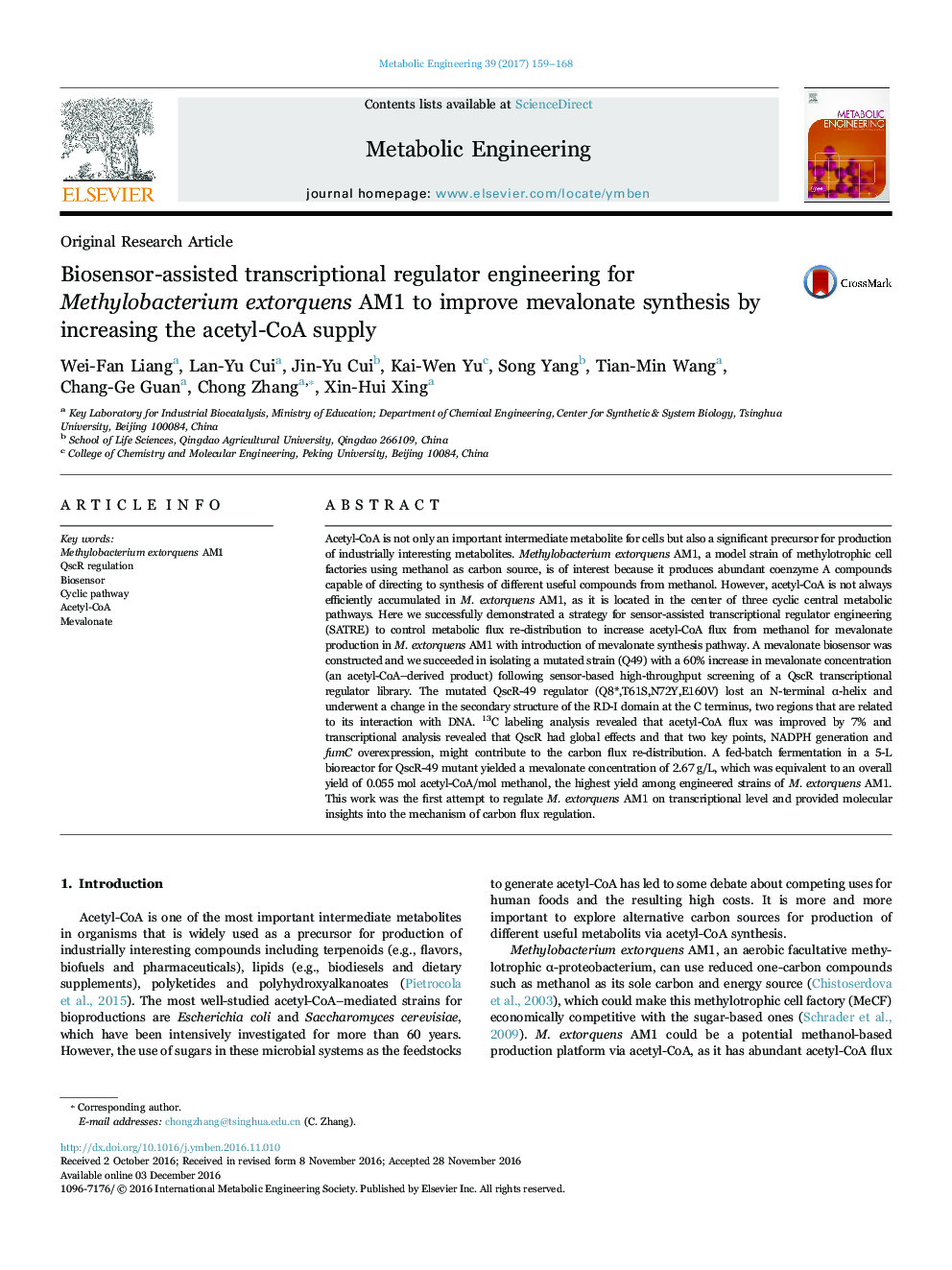| Article ID | Journal | Published Year | Pages | File Type |
|---|---|---|---|---|
| 6452795 | Metabolic Engineering | 2017 | 10 Pages |
â¢First establishment of high throughput screening method for M. extorquens AM1.â¢First SATRE strategy to control carbon flux in M. extorquens AM1.â¢Up to 0.055 mol acetyl-CoA / mol methanol in fed-batch fermentation.
Acetyl-CoA is not only an important intermediate metabolite for cells but also a significant precursor for production of industrially interesting metabolites. Methylobacterium extorquens AM1, a model strain of methylotrophic cell factories using methanol as carbon source, is of interest because it produces abundant coenzyme A compounds capable of directing to synthesis of different useful compounds from methanol. However, acetyl-CoA is not always efficiently accumulated in M. extorquens AM1, as it is located in the center of three cyclic central metabolic pathways. Here we successfully demonstrated a strategy for sensor-assisted transcriptional regulator engineering (SATRE) to control metabolic flux re-distribution to increase acetyl-CoA flux from methanol for mevalonate production in M. extorquens AM1 with introduction of mevalonate synthesis pathway. A mevalonate biosensor was constructed and we succeeded in isolating a mutated strain (Q49) with a 60% increase in mevalonate concentration (an acetyl-CoA-derived product) following sensor-based high-throughput screening of a QscR transcriptional regulator library. The mutated QscR-49 regulator (Q8*,T61S,N72Y,E160V) lost an N-terminal α-helix and underwent a change in the secondary structure of the RD-I domain at the C terminus, two regions that are related to its interaction with DNA. 13C labeling analysis revealed that acetyl-CoA flux was improved by 7% and transcriptional analysis revealed that QscR had global effects and that two key points, NADPH generation and fumC overexpression, might contribute to the carbon flux re-distribution. A fed-batch fermentation in a 5-L bioreactor for QscR-49 mutant yielded a mevalonate concentration of 2.67 g/L, which was equivalent to an overall yield of 0.055 mol acetyl-CoA/mol methanol, the highest yield among engineered strains of M. extorquens AM1. This work was the first attempt to regulate M. extorquens AM1 on transcriptional level and provided molecular insights into the mechanism of carbon flux regulation.
